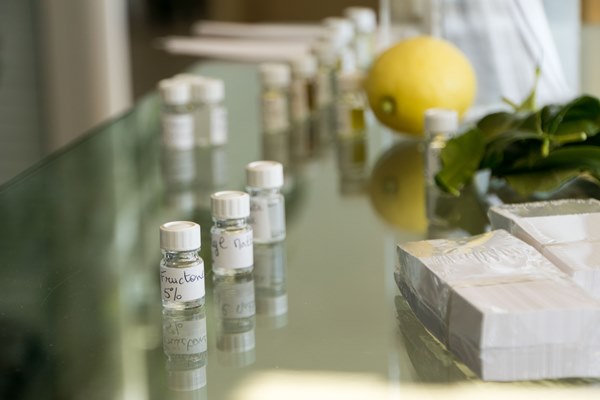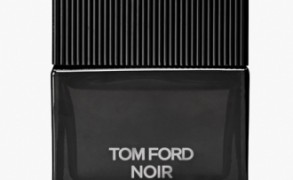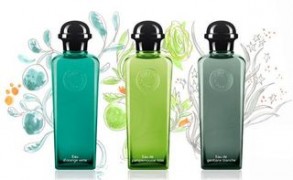The perfumery conservatory in Versailles, the Osmothèque, is not only an institution to maintain a record of perfumery, but also an educational center. From time to time they offer courses as well as coffrets of raw materials for purchase. This fall, the Osmothèque offers a new set that includes 21 ingredients from the perfumer’s palette, natural and synthetic. Each bottle contains 4,7 ml, and also included are blotters and descriptions. The cost is 60 €.

The materials featured are the essential oils of cardamom, Virginia cedarwood, lemon, clove, galbanum, lavender, patchouli, petitgrain, vetiver, and ylang ylang. Jasmine, rose, tonka bean and blackcurrant buds absolutes are likewise included. Then, there are synthetic materials like benzyl acetate, CIS-3 acetate, hexenyl, aldehyde C18, calone, citronellol, galaxolide, and ionone alpha.
The coffret is available at the Osmothèque boutique in Versailles (36, rue du parc de Clagny) as well as during any of their conferences in Paris. For more information, you can call he Osmothèque at +(33) 660 63 68 80 or contact them via their website. If you’re visiting the Osmothèque boutique, be sure to ask about Napoleon’s cologne, which was recreated according to the original formula.
However, if the Osmothèque boutique is not a convenient option for you, I recommend taking a look at the kits offered by Perfumer’s Apprentice. They have a variety of sets at different prices. Alternatively, you can buy your chosen raw materials separately.
Another website offering raw materials, including the most commonly used synthetics, is Perfumer’s World. The quality ranges, but if you’ve ever wanted to smell aldehydes, ionones or coumarin, it’s a good source.
If you’ve tried perfume material kits from other companies, please let us know in the comments.
Photography by Bois de Jasmin, in a perfume lab (for illustration purposes only)













26 Comments
Andy: This kit sounds luscious! When I started smelling/tinkering around with perfumery raw materials, it completely changed the way I smell and enjoy perfume. For those in the U.S., I would comment that I also like Perfumer’s Apprentice for their selection of Robertet bases and specialty materials, which are based on plant essences/absolutes/etc. Most of the Robertet products smell incredibly good all on their own, and some even seem to have made it into some spectacular perfumes (I smell Bois d’Encens, or a similar material, in the Armani Privé of the same name) November 12, 2018 at 11:14am
Victoria: Oh, yes, Perfumer’s Apprentice does have nice naturals and a huge selection. I can’t agree more with you, learning raw materials is a lot of fun and it really helps you understand perfumery better. November 12, 2018 at 2:50pm
Annie: I’ve always wanted to try Iso E Super. I see it mentioned in some reviews or perfume descriptions and I’m curious. Maybe I should get a small vial. November 12, 2018 at 11:47am
Victoria: I haven’t checked if they have it, but it should be possible to find. November 12, 2018 at 2:48pm
Annie: I forgot to ask. Do you have a recommendation between Perfumer’s World and Perfumer Apprentice? November 12, 2018 at 11:48am
Victoria: I find them pretty much the same, so I’d say, go based on price and shipping fees to your destination. But if you’re in the US, Perfumer’s Apprentice is better. They also have nice naturals. November 12, 2018 at 2:48pm
delia jean adkins: what a good tip! i have wanted such a kit for some time. thank you! November 12, 2018 at 12:15pm
Victoria: Hope that you can find the one that works for you. November 12, 2018 at 2:45pm
jodee: Do you know if the kit offers “recipes”? I have purchased several individual ingredients but am at a loss on how to mix them. It would be helpful to have a guide for us newbies. November 12, 2018 at 1:17pm
Victoria: They’re just to learn the raw materials. You can’t learn mixing a perfume from a kit. I mean, it takes a perfumer student a full year of just studying raw materials before they start mixing accords. These kits are only to learn what each material smells like individually. November 12, 2018 at 2:44pm
Eline: Hello Victoria, love your blog, very inspiring!
The e-shop at Galimard also offers a perfumer’s apprentice set, containing 18 15ml bottles. Not sure whether you would call the contents raw materials (I don’t have the knowledge to judge that), but perhaps it’s still a nice tip for anyone interested in training. The set includes 6 base, 6 middle and 6 top notes and an instruction for at least one composition. Haven’t tried that yet, so not sure about the result, but I do like the quality of the individual notes.
https://www.galimard.com/en/product/perfume-creation-kit November 14, 2018 at 1:44am
Victoria: Thank you very much, Eline! November 14, 2018 at 7:36am
Neva: I’ll be following this post. It sounds very interesting and maybe it’s a sign that I should dive a bit deeper into perfume ingredients. Thank you for the good idea. November 12, 2018 at 4:39pm
Victoria: It’s a good way to expand your knowledge and understand the way fragrances are put together. November 13, 2018 at 12:41pm
Klaas: Thank you for posting, Victoria. I’d love to smell these notes on their own, bit didn’t really know how to obtain them. This set sounds like an excellent start! November 12, 2018 at 6:00pm
Victoria: I’m glad to hear it! If you do get any of the kits, please let me know. November 13, 2018 at 12:42pm
Muriel: Hello Victoria, I was wondering if you had any tips to share concerning the best way to learn these materials. Of course, you smell them, but then, how do you work to memorise them? Do you associate a smell with an image or an object (like cedar wood – pencil box), but that won’t work for all of them… do you associate 1 material with another? I guess it is best to move on slowly in the beginning and then add 1 material once you think you’re OK with the other ones? Do you work randomly with the materials at your disposition or do you classify them first? (I think this is very important in my own approach to perfumes, because I need to understand them, in the same way as the alphabet is needed to be able to read a book…) Thanks!! November 13, 2018 at 6:56am
Victoria: Those are very good questions. There are two theories on how you should study materials. One is to work through categories: florals, citrus, woods, fruit, etc. The other is to contrast–one from floral and one from wood, for instance. At the IFF Perfumery Academy we learned by categories, which is best for me, as it allowed me to learn the nuances of each ingredient well. You have to study each category until you know every ingredient and only then do you move onto the next category. You learn by noticing the nuances and writing them all down. Then when you smell, you use your notes to help you remember.
The cedarwood = pencil shavings example you’ve used is spot on. That’s how we’ve learned cedarwood. 🙂 November 13, 2018 at 12:46pm
Muriel: Hello Victoria, thanks for your explanations! Do you know if there is some sort of documentation available somewhere, where the raw materials are grouped by category? Last summer, I attended 2 weeks of training at ISIPCA and the first week was about raw materials and formulation. It was kind of a crash course, because time was very limited, but I brought back some tiny bottles like the one on your picture, with the different ingredients we used, and now I want to learn them! I’m starting with the citrus family (thought that would be the easiest), but already wonder if Neroli fits in there or in flowers, and what about sth artificial like Methyl naphtyl ketone? would these 2 go in Flowers? or maybe it doesn’t matter… they could maybe be a bridge between 2 categories…. hmmm… WDYT? November 21, 2018 at 9:13am
Kate: Hi Victoria, when you were learning raw materials at IFF, did you smell pure ingredients or in dilution?
Thanks!
Kate November 30, 2018 at 9:47am
Victoria: Always in dilution. December 1, 2018 at 7:00am
Anna: I’d love to hear more about Napoleon’s cologne! Have you tried it, Victoria? November 14, 2018 at 6:07am
Victoria: Yes. It’s a classical cologne (as you can imagine!), but it’s so well-done and historically interesting that it’s worth checking out for this reason alone. November 14, 2018 at 9:21am
yomi: thisis very interesting. ive just begun a perfume training course in nigeria and im developing a kit just like tis…would be interesting and fun to viit the osmotheque soon. November 16, 2018 at 11:16am
Aurora: Good to know, thank you, Victoria. I have had a good experience with buying angelica e.o. from Mystic Moments UK,, they have a large selection and prices are very reasonable, I also stock up at Distillerie Bleu Provence when I’m there, they produce most of the oils they sell. November 18, 2018 at 3:46am
MARGARET JAMIESON: Perfumers Supply House has some great materials as well, and is having a Holiday Discount of 15% (not affiliated)
https://perfumersupplyhouse.com/ November 24, 2018 at 10:04am